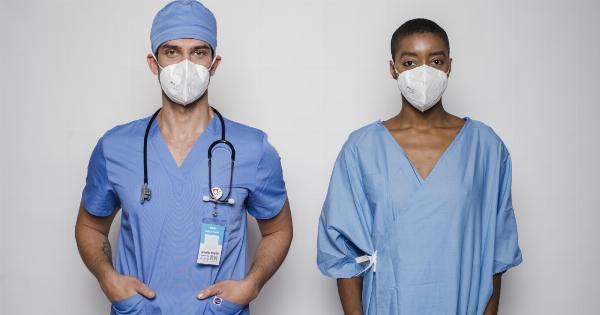Varicose veins are a common problem that affects millions of people worldwide. They are swollen, twisted veins that often appear dark blue or purple. While varicose veins can occur anywhere in the body, they are most commonly found in the legs and feet.
Varicose veins develop when the valves in the veins responsible for allowing blood to flow back to the heart become weak or damaged. This causes blood to pool in the veins, leading to their characteristic twisted and bulging appearance.
Apart from their unsightly appearance, varicose veins can also cause discomfort, pain, and aching legs.
While there are several non-surgical treatment options available for varicose veins, such as compression stockings, lifestyle changes, and sclerotherapy, sometimes surgery is the best option to permanently get rid of this condition.
In this article, we will explore various surgical treatments for varicose veins and how they can help you say goodbye to this troublesome condition once and for all.
1. Endovenous Laser Ablation (EVLA)
Endovenous Laser Ablation, also known as EVLA or EVLT, is a minimally invasive procedure that uses laser energy to treat varicose veins. During the procedure, a laser fiber is inserted into the affected vein through a small incision.
The laser energy is then delivered to the vein, causing it to collapse and seal shut. The blood is rerouted to healthier veins, and over time, the collapsed vein is absorbed by the body.
EVLA is a popular choice for treating varicose veins as it is relatively painless and leaves minimal scarring. It is performed under local anesthesia, allowing individuals to return home the same day.
Most patients experience significant relief from their symptoms after EVLA, and the appearance of their varicose veins improves over time.
2. Radiofrequency Ablation (RFA)
Radiofrequency Ablation, or RFA, is another minimally invasive procedure used to treat varicose veins. Similar to EVLA, RFA involves the insertion of a catheter into the affected vein.
However, instead of laser energy, radiofrequency energy is used to heat and seal the vein. This causes the vein to collapse and eventually be reabsorbed by the body.
RFA is a safe and effective procedure that provides long-term relief from varicose veins. It is usually performed under local anesthesia and has a quick recovery time.
As with EVLA, individuals can expect a significant improvement in both the symptoms and appearance of their varicose veins after RFA.
3. Ambulatory Phlebectomy
Ambulatory Phlebectomy is a surgical procedure used to remove small varicose veins on the surface of the skin. It is performed under local anesthesia and involves making tiny incisions over the affected veins.
These incisions are so small that they do not require stitches. The varicose veins are then carefully removed using specialized tools.
Ambulatory Phlebectomy is often recommended for individuals with large varicose veins that are too difficult to treat with sclerotherapy or laser procedures. It is a highly effective treatment option that provides immediate results.
Although there may be some minor bruising and swelling after the procedure, most individuals can resume normal activities within a day or two.
4. Vein Stripping and Ligation
Vein stripping and ligation is a more traditional surgical technique used to treat severe cases of varicose veins. It involves the complete removal of the affected vein through small incisions.
The procedure is performed under general or regional anesthesia and may require an overnight hospital stay.
While vein stripping and ligation is an effective treatment option, it is a more invasive procedure compared to the previously mentioned techniques.
As a result, the recovery period is longer, and there may be more discomfort and scarring after the surgery. However, for some individuals with extensive varicose veins, this may be the most suitable treatment option to achieve lasting relief.
5. Benefits of Varicose Vein Surgery
Varicose vein surgery, whether it involves laser treatments, radiofrequency ablation, ambulatory phlebectomy, or vein stripping, offers several benefits to individuals suffering from this condition. These benefits include:.
– Improved Appearance
The primary concern for many individuals with varicose veins is their unsightly appearance. Surgery can help eliminate or significantly reduce the appearance of varicose veins, allowing individuals to regain confidence in their legs’ appearance.
– Relieved Symptoms
Varicose veins often cause discomfort, pain, and aching in the legs. Surgery can alleviate these symptoms, allowing individuals to carry out daily activities without the discomfort associated with varicose veins.
– Enhanced Quality of Life
By improving the appearance and relieving the symptoms of varicose veins, surgery can greatly enhance an individual’s quality of life.
It can restore mobility, relieve pain, and boost self-esteem, allowing individuals to enjoy life to the fullest.
– Long-Term Solution
While non-surgical treatments can provide temporary relief, surgery offers a long-term solution for varicose veins. By addressing the underlying causes, surgery eliminates varicose veins more permanently, reducing the chances of recurrence.
Conclusion
Varicose veins can be a source of discomfort, pain, and self-consciousness for many individuals. When non-surgical treatment options fail to provide satisfactory results, surgery can be an effective solution.
Whether it’s through endovenous laser ablation, radiofrequency ablation, ambulatory phlebectomy, or vein stripping and ligation, varicose vein surgery offers long-lasting relief and improvement in both symptoms and appearance. Consulting with a qualified vascular surgeon can help determine the most appropriate surgical approach based on individual needs and preferences, ultimately leading to saying goodbye to varicose veins once and for all.






























